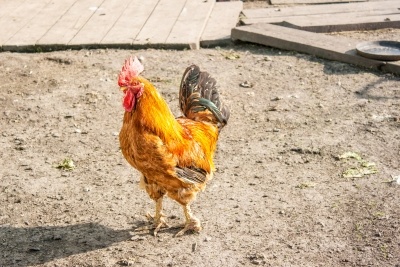
Washing chicken carcasses with chlorinated water is an accepted practice in the USA but is not allowed in the European Union. It sounds a straightforward difference in meat handling practice between two major trading blocs but dig deeper and you uncover a number of political and environmental issues which lie at the heart of what is acceptable in food supply. The current situation is that no chlorine washed chicken is allowed to enter the food chain within the EU.
Keeping chickens to sell on for meat has been a controversial topic for many who are interested for want of a better word in animal welfare, the desire to cut food costs and how safe we can make the supply of such meat. We’ve looked at Campylobacter as a food poisoning item not so long ago because it was such a newsworthy event when large numbers of people regularly fell ill from ingesting infected chicken. The situation was such that a high number of chickens available at retailers were contaminated with this bacteria.
The idea of using decontaminants to wash chicken carcasses is at least sixty years old. Back in the late 50s it was well known that Salmonellae were to be found on poultry carcasses and especially ones whose internal organs had been removed (i.e. eviscerated). The presence of this particularly nasty food poisoning bug on poultry was due to cross-contamination of factory processing equipment and poor hygiene amongst food handlers during chicken processing.
One remedy was to apply a decontaminant that was effective in killing surface borne bacteria, simple, quick and easy to apply, economically sound and safe to use with minimum impact on the quality of the meat. As well as using antibiotics and we can include nisin in this regard, β-propiolactone and organic acids like succinic and citric acid were all suggested. The application which ticked most boxes however were chlorine dips which were tested in the very early 60s. Dixon and Pooley (1961) reported the use of a 200 p.p.m. chlorine wash for 10 minutes as an effective treatment and the success of such a process was highlighted later on by Thomson et al., (1967). Over the years, the practice has been refined to an extent where it is understood just how effective chlorine washing is (Bailey et al., 1987).
Generally, chlorine washing of a chicken carcass has no impact as far as anyone is aware on the taste and flavour of chicken. Indeed, the EU is considering the use of a peroxyacetic acid wash for treating chickens which is potentially more noxious. Whilst I wouldn’t drink swimming pool water as a rule I have no qualms about attempting a poor breaststroke in it. There is no situation as far as I’m aware where we would be ‘poisoned’ by the use of such post-processing treatments. From the EU perspective, the European Food Safety Agency (EFSA) considers chlorine washed chicken as safe to eat. Clearly, the US consumer literally has found it acceptable to eat chicken washed with chlorine given the amount of fried chicken that crosses over the counter.
The main issue relates to the pursuance of high animal welfare standards along with similarly high regard for environmental concerns. Allowing chickens which have been treated with chlorine washes could lead to an undermining of the many values which we associated with good practice in animal welfare. One perspective I’ve noticed when discussing the situation is that it hides or disguises other hygiene issues. We may have extremely high inspection standards that look at all aspects of the food supply chain and we can enforce actions to remove the problem. In the UK, we are currently able to compete within the EU on a relatively firm and equal footing because we are all supposed to adhere to the same high standards. In an environment where UK farmers or indeed any other farmer is competing against rivals who do not have to follow such stringent regulations, puts the former employing high welfare standards at serious disadvantage. If a chicken which costs about 75% to 80% cheaper but has been chlorine washed is available it would be no surprise in a cash-strapped economy what the consumer would buy.
References
Bailey, J. S., Thomson, J. E., & Cox, N. A. (1987). Contamination of poultry during processing. (Vol. 193). Academic Press, Orlando, FL. USA.
Dixon, J. M. S., & Pooley, F. E. (1961). The effect of chlorination on chicken carcasses infected with Salmonellae. Epidemiology & Infection, 59(3), pp. 343-348
Thomson, J. E., Banwart, G. J., Sanders, D. H., & Mercuri, A. J. (1967). Effect of chlorine, antibiotics, β-propiolactone, acids, and washing on Salmonella typhimurium on eviscerated fryer chickens. Poultry Science, 46(1), pp. 146-151.
Leave a Reply